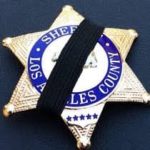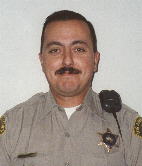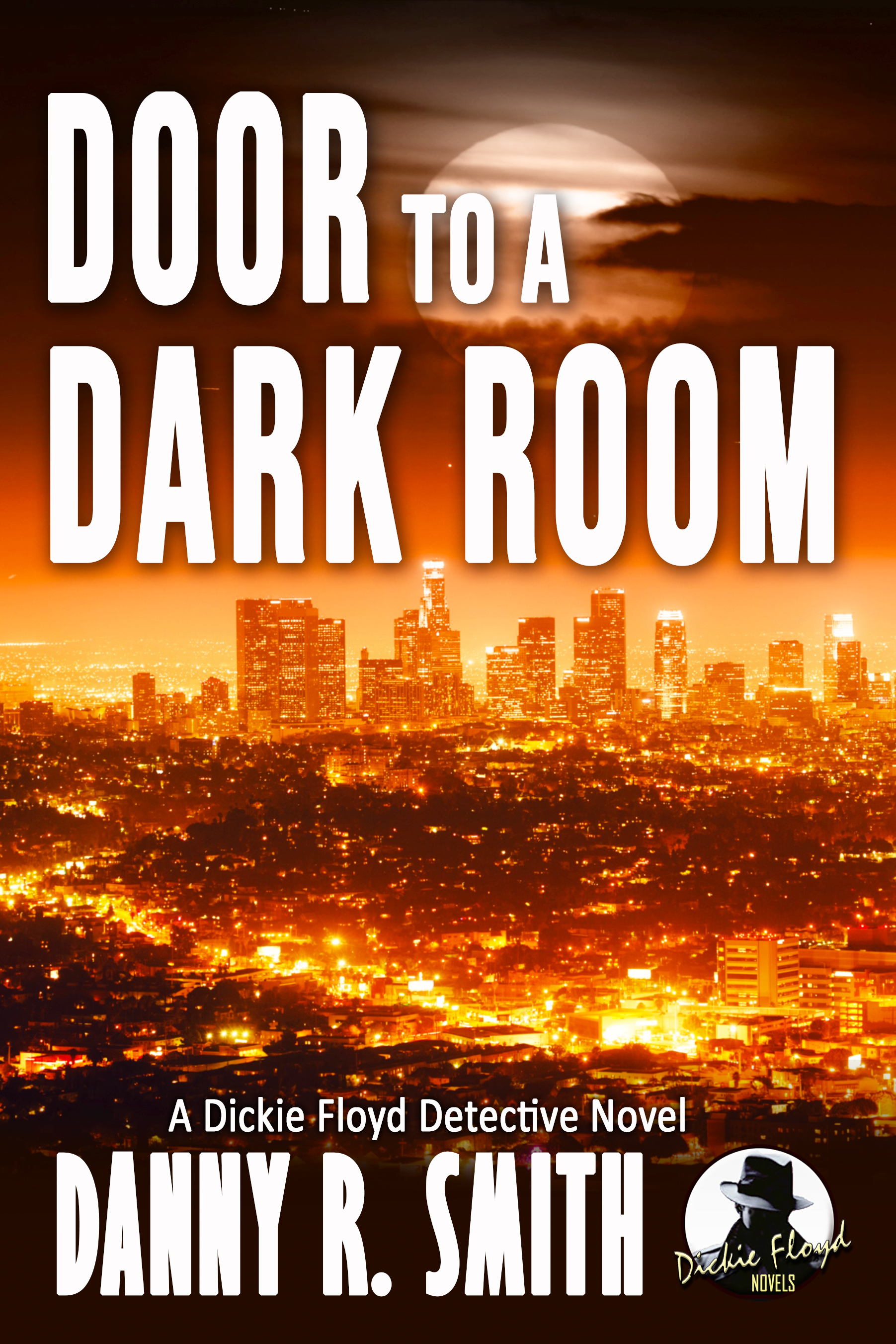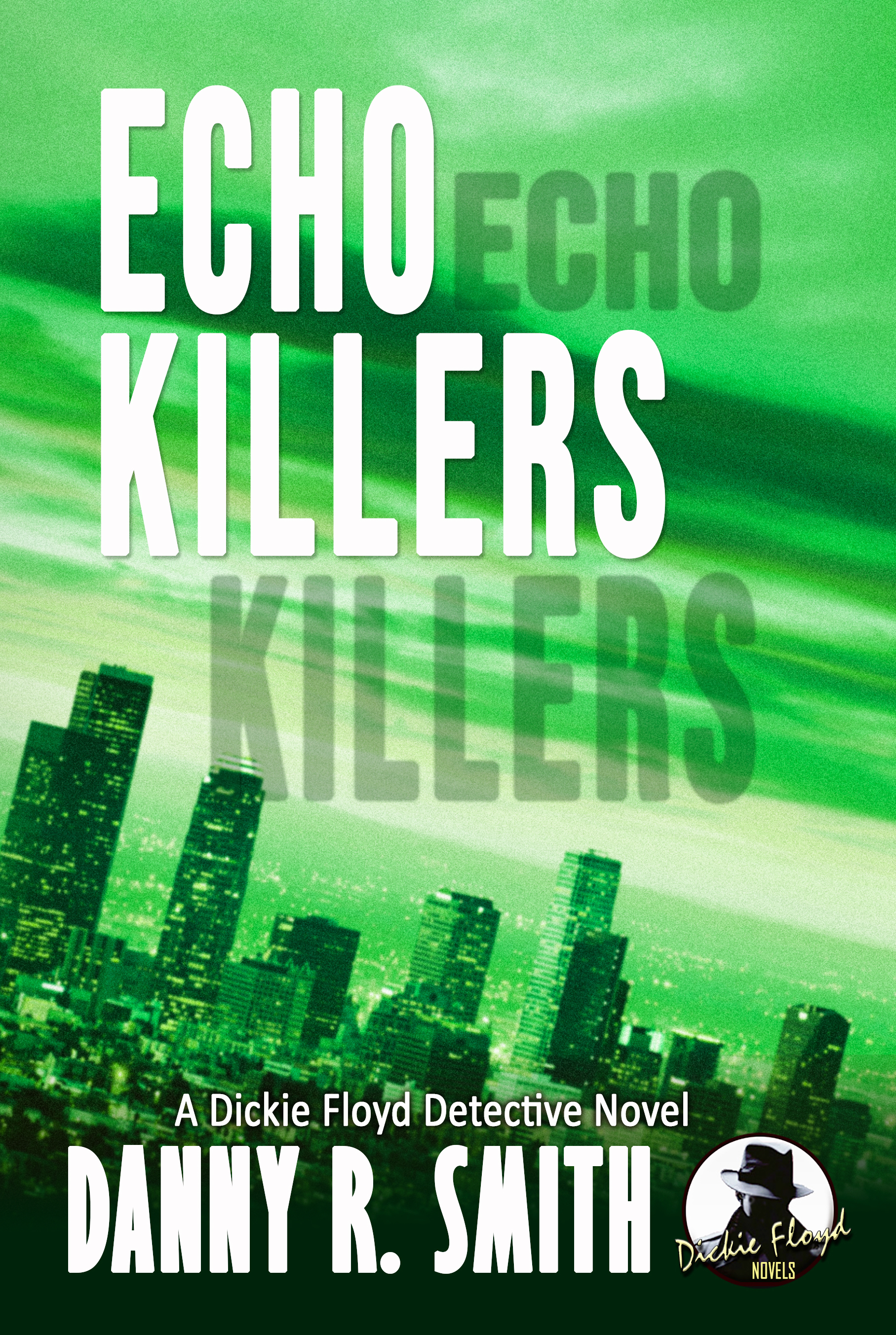 During the early morning hours of October 30, 1997, Deputy Michael Hoenig was killed by gunfire as he attempted to stop a suspicious man on a bicycle in the City of Lynwood.
During the early morning hours of October 30, 1997, Deputy Michael Hoenig was killed by gunfire as he attempted to stop a suspicious man on a bicycle in the City of Lynwood.
Last week, I received a message from a colleague who had been reading the reflections posted on the Officer Down Memorial Page of Deputy Hoenig, remembering him on the anniversary of his death. The colleague asked if I had known Deputy Hoenig, or if I knew the details surrounding his death, suggesting it might make an interesting blog if I did.
I did know Deputy Michael Hoenig, and I was involved in the investigation of his death.
My Interaction with Deputy Hoenig
It was 1996 and I was working the detective night car out of Century Station. My partner and I had gone out in the field in an unmarked detective car, a chocolate brown Chevy Caprice that fooled nobody over the age of three as to our identity. We were dressed in green Sheriff raid jackets that were tucked into jeans, topped by our Sam Browne belts which carried traditional patrol equipment.
We were in the City of Lynwood, not far from where Deputy Hoenig would be killed just over a year later. It was broad daylight when we spotted a young Hispanic gangster, gun in hand, moving quickly along the sidewalk.
Chasing Bad Guys
The chase was on, which meant our usual, questionable tactics were immediately employed: My partner bailed out of the car and began chasing the kid with the gun, and I drove ahead to cut him off. The gangster was on the sidewalk to my left, so I accelerated past him and nosed across the sidewalk. Before I had come to a stop, my door was open, and my pistol was leading me out of the car.
Mr. Vato Loco darted across the road behind me, my partner still in pursuit but some distance behind. I ducked into the car and began backing into the street in order to continue my pursuit. But in all the excitement, I hadn’t bothered to bring my other leg into the car and close the door; I had anticipated getting out again in the very near future. The door caught the bumper of a parked car and bent backward against the hinges.
Meanwhile, my partner had taken an angle at our gangster that sealed the gangster’s fate, and the bad guy saw it coming. He turned to see me coming toward him from the other direction, the crunched car now parked and waiting behind me.
Gangster Apprehended
We had our pistols leveled at him, and I remember yelling some of that magical police shit, commanding him to drop the gun or die of lead poisoning. He did as he was ordered and was taken into custody without incident.
Our first instinct in such situations was always, “We can fix it” (as opposed to reporting it). But as we stood staring at the crinkled door, our hope of pulling that off, diminished rather quickly. So we called for a supervisor and a traffic car, someone who, unlike us two Neanderthals, knew how to write a vehicle collision report.
Deputy Michael Hoenig
He was assigned to a Lynwood City traffic car, and he responded to our request.
I hadn’t spoken to Deputy Hoenig much beyond a few passing greetings in the hallways of Century Station. It was a big place, and patrol and detectives didn’t interact as much as they might otherwise have because of the station design.
On the occasions I had encountered Deputy Hoenig, he always had a smile on his face and warm eyes that telegraphed a friendly disposition. Standing next to our “slick” car, he looked at the crunched door and then glanced at the gangster sweating in the back seat of our car.
“At least you got him,” he said, smiling.
A Traffic Collision Report
Deputy Hoenig listened as I told him the circumstances of how I managed to back up with the car door wide open while pursuing the pint-sized killer who now sat in our back seat. Hoenig nodded. “Not a problem, sir. Shit happens. I’ll write it up the best I can.”
And he did. He wrote as favorable a report as could be written, given the circumstances. We thanked him for his work, shook hands, and went our separate ways.
One Year Later
The next time I saw Deputy Hoenig, his eyes were no longer warm, and his smile was long gone. Both had been taken from him in a vicious, deadly attack, something we (cops) are always aware can happen yet are always surprised when it does.
Shortly after the mishap with the car door, I had transferred to Detective Divison, Special Investigations. After a year there, I was promoted to Homicide Bureau. I hadn’t been there much more than a month when our bureau was summoned to Lynwood to handle the worst case a homicide detective can handle: the murder of one of our own.
The homicide team that was up for murders that night was not the team to which I was assigned. But as often is the case—and it was on this occasion—many homicide detectives respond to these types of callouts without being assigned or asked to do so. I don’t remember now how I learned of the case, but I responded to the scene to see what, if anything, I could do to help with the investigation.
I hadn’t expected to know the deputy who had been killed.
Other Fallen Colleagues
In my very early days with the department, I had been assigned to Men’s Central Jail, and George Arthur had been my sergeant. On a warm night in June 1985, George was murdered when he left the facility after his evening shift. I had visited with him shortly before he left, and I was sitting outside waiting for a friend when Lieutenant Brad Welker ran past me, headed toward the parking lot, fear and intensity on his face.
“George Arthur has been in an accident,” he puffed out as he ran past, in response to my asking what was wrong. I learned the next day that George had actually been murdered in his vehicle, just a short distance from the jail.
In 1986, I transferred to Patrol Division, Firestone Station, where we averaged a murder a week and sometimes many more. I was still there in 1992 when Deputy Nelson Yamamoto was killed. I was a detective at Century Station when Deputy Steve Blair was killed in 1995, and I had assisted Homicide at the scene of his death and during the following days and weeks as we pursued his killer.
I had learned to compartmentalize the emotional component of death from the business at hand, at least until the appropriate time to mourn had come.
The Night Deputy Hoenig was Killed
There wasn’t much a newbie at Homicide would be tasked with on his own when a cop was killed. I was given a detail to handle, something minor I can’t even recall. I completed it and returned to my duties at the bureau, my heavy heart concealed from my new colleagues.
It wasn’t the image of Deputy Hoenig’s warm, friendly eyes that stayed with me; rather, it was a terrible new picture of those eyes, now clouded and dull, fixed on something far beyond the filthy goddam street he died on. Like the way a fiery iron singes its brand into the leathery hide of a months-old calf, that image never left me. Many others have remained as well.
The next day, my lieutenant suggested it would be good for me to accompany him and others to the autopsy of Deputy Michael Hoenig.
No Stranger to Death
When I arrived at Homicide in September 1997, I had fourteen years on the department. By then, I had, in one fashion or another, been involved to some extent in at least a hundred death cases. I had been to half a dozen cop funerals. During my first week at Homicide, I was sent to the coroner’s office for a week of training. I viewed several dozen autopsies and went on as many calls with a coroner’s investigator. Then, I was partnered with a training officer, Mike Scott, who had opened the unsolved (at that time) murder of Sergeant George Arthur. He provided me with several boxes of files and photographs and told me to study it all during my spare moments. It was the first time I had viewed the autopsy of someone I knew. Though it was only through photos, it was a very distasteful experience.
Now I was going to witness, tableside—live and in color—the postmortem examination of a person I knew. A person with whom I had interacted, a person whose company I had enjoyed in the relatively short time I had known him. A fellow Deputy Sheriff.
This would elevate this death business to a new level. It was uncharted waters into a treacherous sea, one of which, dare I say, many would not sail.
Welcome to the Big Leagues
There will be many friends, colleagues, loved ones, and maybe even family members of Michael Hoenig who will read this blog. For that reason, I will not describe his autopsy in any detail. But what struck me most, and what I do want to share, is the reverence that was shown during an otherwise horrible event.
As mentioned, I had viewed scores of autopsies by then, and I’ve viewed hundreds since. Most autopsies are performed in gruesome fashion with no reverence for the dead. Sometimes a dozen autopsies would be going at once in the two autopsy rooms, separated by two pairs of solid double doors and a hallway. The tools generally used in the process are harsh, but efficient. At times, the rooms would be full of idle chatter, sometimes laughter, all standard coping mechanisms in the business of death.
But during this very special examination, the room was hushed. There was no chatter, no levity; it was all serious business. The procedure had been purposely scheduled late in the day so that no other autopsies would be taking place.
The Audience
Many observers were in attendance: department executives, representatives from the district attorney’s office, the chief medical examiner, and an assortment of homicide detectives. Each of us was dressed in blue paper gowns, paper shoes, rubber gloves, respirators, and eye protection. Most of us wore blue hairnets on our heads.
The process of the examination was delicate, with great reverence for the deceased, and consideration of the audience. The tools used were surgical scalpels, not the usual harsh tools that resembled those used for gardening and carpentry. Even the standard and frequent spraying and washing to keep the work area clean was subdued. Usually, observers instinctively retreated when the coroner’s tech reached for the hose.
It was as nice as it could be. The work of a surgeon, not a butcher. A finish carpenter, not a framer.
But in the end, all of the tranquility came to an abrupt stop when Deputy Hoenig’s uniform was brought in for gunshot wound analysis. His badge and name tag remained intact and in their proper places, although stained by the volumes of his lifeblood that soaked his shirt.
The sight of Deputy Hoenig’s uniform jolted me, and its memory has stayed with me. Because it was those things, the uniform and badge, that represented the entire story of his death.
Michael Hoenig, a young man of only 32 years, died violently, ambushed as he was exiting his car, struck multiple times by a hail of bullets in the dark of night. Because—and only because—he chose to wear the badge, the same badge I wore that day as I stood tableside to his final exam. The same badge many of us have worn and will continue to wear.
The Risk we all Accept

Deputy Hoenig had assumed the same risks all of us had, and he paid the ultimate price while serving a community other than his own.
It was something he had done for many years, and almost always, he had done so with that smile on his face.
* * *
Thank you for reading my blog. I hope you will share it with your family and friends.
A GOOD BUNCH OF MEN
 DOOR TO A DARK ROOM
DOOR TO A DARK ROOM
 ECHO KILLERS
ECHO KILLERS
 THE COLOR DEAD
THE COLOR DEAD

Death after dishonor

Three in the morning, sitting in my brother’s guest room, visiting from out of state. He just left to take his daughter to the airport, one of Michael’s nieces he would never meet. He would have liked it here. They would have loved him.
They say there are three deaths – the first when the body no longer functions. The second when the body is consigned to the grave. The third is that moment, sometime in the future, when your name is spoken for the very last time.
Thank you for helping to keep my brother Michael alive, just a little.
Georgia, thank you so much for your heartfelt comment. I’ll never forget Michael or his sacrifice, and I promise you none of his other colleagues will either. May he rest eternally in peace. God bless! Danny
Thanks for sharing these words with us, Danny. As I get older, I fight everyday to keep the memory of my best friend alive within me.
I want to keep the images of our time spent together and his voice clear in my mind. I know I will see him again one day and I don’t want to disappoint him.
It makes me feel incrementally better knowing I am not the only one remembering Mike. I am grateful.
Steve, I am always surprised when my words reach someone connected to the subject of my writing. I’ve had others reach out to me about this post, close friends of Mike’s who loved him dearly and miss him greatly. Yet I never expected to hear from a family member, for some reason, even though it has happened many times with other subjects.
As you’ve read in this blog, and as I write about in my newly released memoir, Nothing Left to Prove, your brother’s death had a profound effect on me. As I write this, emotions come back, memories of his life and death emblazoned in my mind. I can only imagine how much more difficult that day was for you and your family.
May God bless your family and bring you peace, and may Deputy Michael Hoenig forever Rest in Peace, until we meet again.
Thank you for reaching out to me.
Danny
Danny, I don’t know if you’ve been following the Jack Williams saga as of late. Recently Bobby Esquivel put in a years worth of work to have a Freeway dedication authorized in his memory. Almost as soon as the dedication ceremony was over we started hearing that Gascon wants to release his murderer for time served. The original sentence was death special circumstance killing of a police officer. Reduced to life thanks to the Governor. Now Gascon wants to release him while his family and his brothers in arms still grieve his loss. Perhaps you can find a way to impact this and encourage others to write the appropriate authorities to prevent this murderous asshole from returning to our streets.
This is a sad and all too common reflection now days, Danny. There are too many of us dying, and too few in the media and society even noticing. Every time I hear about an officer down my heart aches. We all bleeds blue.
Yessir. Thanks, Mike.
I knew Michael Hoenig for a brief 16-week rigorous training regimen known as the Rio Hondo Police Academy, (Class 85). The academy was proud to brag that “only the strong survive”. Known for being the last stress academy in the state, Michael and the rest of us in Class 85 graduated proudly on October 23rd, 1987.
At that time, there were quite a few other LA County Marshals in our class. We were so young and so proud.
Michael and the other Marshals were later taken over by and transitioned into the LASD cadre. This allowed court deputy Marshals to now go out and work the mean streets. I remember worrying about that transition and the new dangers it held for my classmates. I recall that while in the Academy, we were told that we should look around the classroom, the instructor told us that some of us would be fired, not pass training or probation and yet others, would die or be killed. Traffic accidents, shootings, and other mishaps were promised to be the cause.
On Halloween night, October 30th, 1997, at about 3 AM in the early morning hours, the life of a brave, resilient, and brave man was stolen too soon. I tell myself GOD must have needed a soldier to protect the gates of St. Peter. I wore that black band over my badge knowing it was for one of my classmates. I think of Michael often, especially when I roll out on Halloween night.
Stay safe out there and take care of each other.
Randy, thank you for contributing to his story. My condolences, brother.
I was a Deputy Marshal with Mike. I didn’t know him at the time but, met him through mutual friends. I got to know Mike when we both attended Patrol School together and eventually went to Century Station. Due to training, we would briefly speak to each other, asking each other if we were okay or offered help to each other… we were told the guys from LASD weren’t going to be supportive of us and we would be rolled up and fired, a total lie! I learned from the best My TO’s John O’Hara and Steve Blair and all the guys from Lynwood, Firestone… Century Station.
The night Mike was going to be murdered, he and I ran into each other in The Station. We chatted a bit then agreed to make some time to sit down and break bread together… l gave Mike a hug (because Abel Moreno said,” You always give your brother it hug… it might be the last time you see him”…. it was, Mike was killed approximately 3 hrs later.
When I’m at home or out and about, alone… I often think of him, Steve Blair, Brandon Hinkle ( who I rolled up on on an assistance request) and saw deceased on the road. I shed some tears when i think about them but, know they are in a better place… I then smile and thank God for giving me the opportunity of knowing them for a brief moment which to me is a life time.
Thank You Danny
Thank you, Tommy. Very heartfelt comment. Be safe and God bless you, brother.
One of the previous posters mention Mike Lavieri, the Carson deputy killed in 1983. I helped reunite his finance’ at the time of his murder and his old partner in 2017 when the City of Carson had a memorial to several fallen deputies from Carson Station,,(including a couple of natural deaths and the first ever murder of the station chaplain on a ride along). There was a widespread misconception that his killer was paroled and free–that was incorrect. I had checked earlier and knew he was still in state prison. But then I discovered that he had appeared once for a parole hearing and was scheduled to be released. We started to organize a major campaign to block his return to society when, talk about karma, the POS died of natural causes in prison.Dang.
Thanks, Joe.
I too knew Michael. We worked together when I was a Sgt. in Paramount. He was such a kind and caring man and it showed in his hard work ethic and calm demeanor. ! retired in 1992 and Michaels’ death hit me in so many unexpected ways. It brought back things that I had been trying to bury. George Arthur and David Andrew were in my academy class. Mike Laveri was killed and Doug Smith was wounded on the morning of my wedding day. Jerry Kaono took the homicide photos and my wedding photos. Today I walk a little taller and smile more than I should because I know that’s what they would want me to do. God bless you all !
God bless you, sir. Thank you.
To Dean L. So many of our families came from where yours did to settle in and work there. Joy was followed by sadness. But they were pioneers. You were a part of history and even though all stories are not the best, I’ll give you a quote from my Grandpa. We buildAmerica one job at a time. No one said it would be easy. ?
Danny,
I too knew Michael. I met him while he was working at Compton Court as a bailiff, I would go there for all my court appearances. I was working Compton PD the evening Michael was killed.
The ripples go far and wide, and forever. Thank you, Russ.
I moved from Kansas to Lynwood in 1958 when I as nine years old. In 1958 Lynwood was an All American City, and a great place to live. Very sad to read about a murder of a deputy taking place in a city I enjoyed for a decade.
Very sad indeed, sir. Thank you.
wow. Didn’t know you had the handle on this Danny. Heart breaking. Thanks for sharing. I have been revisiting some of our fallen brethren in my new memoir. When you mentioned Steve Blair, it brought back his memory.
I was frequently partnered with Steve Blair. I think we had been partnered together a couple of times, and we had so much fun that we started signing up for overtime together. We had so many laughs. People say I’m funny. I thought Steve was a funny bastard. I was with him on some call where an ambulance was needed. I remember that’s where Steve first met Dana, who ended up being the love of his life, and not long after they were married.
I was transferred out of Lynwood in 1991. Steven went on to the gang unit and still worked in the Lynwood area. In May of 1995, he was patrolling on Walnut Avenue next to Ham Park. He stopped to check two gang members. As he got out of his car, he was shot and killed. The gang member was captured and convicted, sentenced to death. I went to several officer funerals after that, and Dana was always there sitting near me, holding Steve’s Lynwood jacket. Seeing Dana holding his jacket with tears in her eyes was always a knife to the heart.
Cliff, thank you. To be clear, I did not have the handle on this case; I only assisted, minimally at that. The night Steve was killed I was working the Century night car/CIT team, and we were very involved in that case and the hunt for that POS whose name I will not mention.
“…his eyes were no longer warm, and his smile was long gone. Both had been taken from him in a vicious, deadly attack, something we (cops) are always aware can happen yet are always surprised when it does.”
This. This is the statement that made me think, “yes. That’s it exactly.”
We’re always surprised. Shocked and saddened in a way we can “usually” distance ourselves from when we had to deal in death. And forever after, that initial feeling of surprise is the gateway that leads to a whole host of thoughts and emotions, whether you want them or not.
The families of the Fallen most likely believe the memory of their loved one has faded for us–a case we worked involving a fellow brother or sister for whom we felt momentary loss and regret over.
There really is no way to express to them just how deeply affected we were then. Or how much we still ARE affected; haunted and traumatized even. With extra layers of emotion and attachment (for the Fallen) from having worked the case.
That’s exactly right. Thank you.
Grim. Can’t imagine how I would have been able to cope. Dearly hope his murder was solved, and Sgt. Arthur’s as well.
Grim indeed. Yes, they were both solved.
Danny, A beautiful respectful tribute. Knowing the fellows that you mentioned as Cadets, or partners & friends it’s comforting to hear someone speak of them again with such reverence. Thanks, Bob
Thank you, Bob. All great men!
Walking up and looking down, you see who got dead. Too many times you realize you knew them. The bad guys you just shake your head say,”Times up, stupid”. Good guys you just had to suck it up, choke it back and whisper,” I’m so sorry it’s you but I’m here and will work for you and never forget you my friend “.
Thanks, Mike.
This is a heart wrenching story, Danny. So very hard to read.